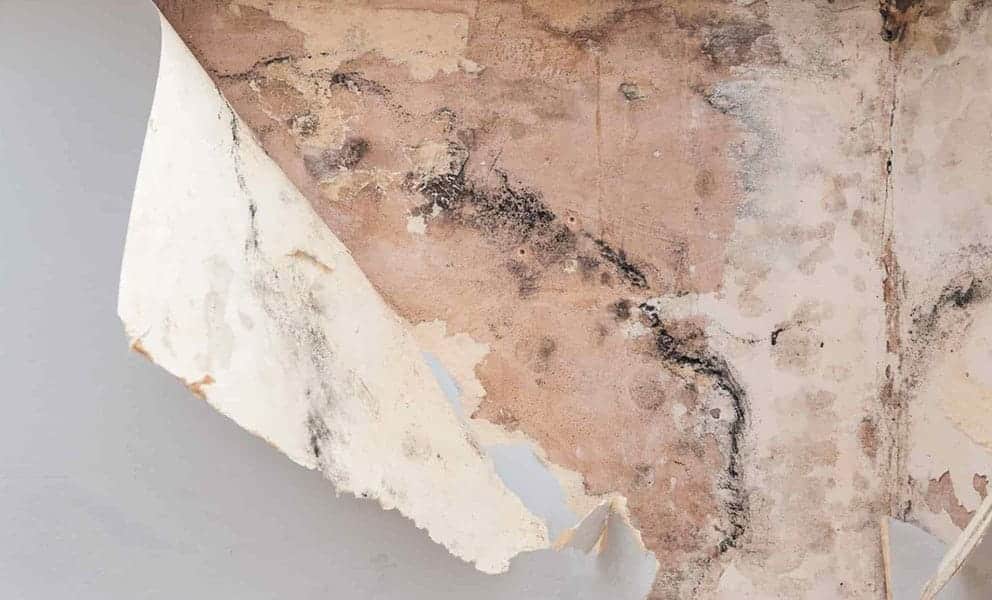
Call our team
01484 442420Find An Applicator
Menu
close

Short term, that means putting up with the discomfort of a cold home. That itself can cause a few health issues, such as reduced immunity and stiffness in the muscles and joints. But what about the long-term impact?
In this article, we’ll discuss why higher energy bills could lead to a rise in damp and mould, the knock-on effects and how it can be tackled.
Since energy prices skyrocketed, one of the most common pieces of advice to those struggling financially has been to ‘heat yourself, not your home’. Hot water bottles, electric blankets, hot meals and layered clothes are among the top tips – or just heating the room you’re in.
These recommendations are much cheaper than heating an entire home, and they do work to some extent. By keeping yourself warm, you’ll avoid the discomfort of a cold home and its short-term impacts on your health.
Unfortunately, however, your home won’t cope well with the continually low temperatures. Here’s why…
Moisture is naturally present in all homes, big and small. It’s generated by a long list of day-to-day activities, most of which are simply unavoidable in your home:
So where does that moisture go? In an ideal world, it will be cleared away by ventilation. That could be the extractor fan above your cooker or shower, or just open windows nearby. They allow moisture to escape so the air inside your home doesn’t become too humid (containing high levels of water vapour).
Ventilation is strongly advised wherever possible in your home, to reduce humidity in the air. However, understandably, it’s not always possible. That’s especially true in winter, when opening windows means sacrificing the temperature inside your home. Do you really want to make your home even colder just to get rid of moisture?
Without sufficient ventilation, moisture will instead be drawn to cold surfaces. That’s why windows often mist up when temperatures drop. Walls and ceilings are also common culprits, becoming stone cold when homes aren’t kept at the right temperature.
Here’s where it gets unsightly and potentially bad for your health. When moisture is drawn to those cold surfaces, it condenses from water vapour to a liquid. If water is left to sit on your walls and ceilings, it creates damp patches. That’s when mould starts to grow.
Mould is a type of fungus that develops in damp conditions. It’s obviously an unpleasant thing to look at on your walls, ceilings or windows. But it has an even nastier side. Mould releases spores into the air, which can make a number of health issues more likely, including:
According to the NHS, the following groups may be more sensitive than others:
In the most serious instances, mould can even be fatal. That was the case for a two-year-old boy in Rochdale, Greater Manchester in 2020, who “died as a result of a severe respiratory condition, caused due to prolonged exposure to mould in his home environment.”
With the risk of serious health issues and even fatalities, something clearly needs to be done about cold homes. Unfortunately, lower energy prices don’t seem to be on the horizon. After the initial 54% rise in April 2022, we saw a further 80% hike in October of the same year.
According to ICAEW, that’s set to get even worse in 2023 with no signs of prices returning to their former levels. The annual average has now almost tripled from £106 to £296. But in many cases, people simply can’t afford those extra costs.
Instead of letting their bills rise so vastly, many people will try to maintain the same costs by slashing their energy usage. To do so, they would need to use around two-thirds less energy – making it practically impossible to keep a home at the recommended minimum of 18°C in autumn, winter and even spring.
Put simply, without another solution, we could see the problems with damp and mould, highlighted above, become a lot more commonplace.
Ventilation and heating are the two lines of attack to stop damp and mould developing. But if they’re not a viable option or they’re already at a maximum, another port of call are the walls themselves.
By treating the walls with a moisture-resistant coating, you can prevent moisture from gathering on them, damp forming, and mould developing. That’s exactly what you get with SprayCork – a natural, sustainable cork-based coating for residential buildings.
Here’s how it prevents damp and mould…
First and foremost, SprayCork adds a damp-resistant layer to your walls. That means that moisture simply can’t gather on the surface, eliminating the environment for mould to grow.
The coating is also completely breathable, so it doesn’t trap moisture inside your home – or those of your tenants.
Finally, it’s thermally insulative. When used as internal wall insulation, SprayCork is proven to reduce heat loss by 30%. That means that it can also help people maintain a more comfortable temperature inside their homes.
As energy bills continue to rise, it’s going to become harder and harder to combat damp and mould through the traditional avenues of heating and ventilation. CorkSol provides a third approach with a damp-resistant coating for internal walls.
Our network of approved applicators is on hand to help homeowners, landlords and housing associations throughout the UK. To find out more, simply call us on 01484 442420 or email [email protected].
"*" indicates required fields